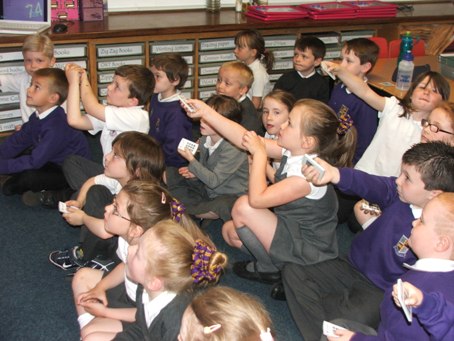
Background
The aim was to explore how technology could be used to support Assessment is For learning (AiFL).
How ICT supported learning and teaching
Document projector was used to display examples of children’s work on the Interactive Whiteboard (IWB). This allowed children to assess their peer’s work more effectively having seen it modelled.
Examples of work which had met a set of success criteria was also shared to demonstrate to children exactly what they are required to do. This was used primarily in literacy and art, but did impact on most curricular areas.
Having no squares on my chalkboard meant it was difficult to demonstrate the correct layout to use in numeracy jotters. Using a squared jotter and the document projector allowed me to overcome this. Furthermore, the projector helped to reduce photocopying costs as worksheets could be displayed on the IWB.
Turning point was used to support AiFL by assigning a remote to each child, and matching their name and remote number to a participant list in the software. This allowed me to track the whole class’ progress at a glance, and adapt teaching and learning accordingly. This was used primarily for environmental studies, but could be used across the curriculum.
 Impact / conclusion
Impact / conclusion
ICT effectively supported AiFL, and ensured children were actively engaged and motivated in their learning.
The document projector was a valuable piece of equipment and enjoyed by the children. There are many more uses which could be explored further.
Turning Point software took some time to get the hang of.







 Impact / conclusion
Impact / conclusion




